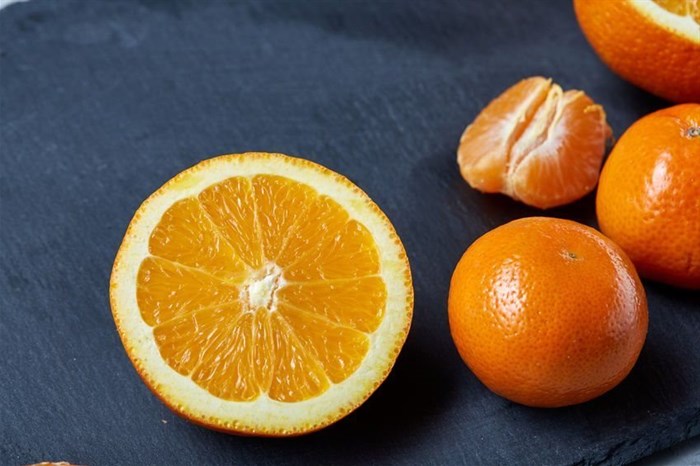
Top stories





HealthcareHIV funding still falls short of targets after pledges: what’s at stake
Melanie Bisnauth 3 hours


This could give the local citrus industry a further boost to cement its position as South Africa’s largest and most important contributor to fruit export, based on value and volume. The citrus industry has grown considerably in the last few years establishing South Africa as the world’s second largest exporter of the fruit.
Alternate bearing (also referred to as biennial or uneven bearing) - the tendency of citrus trees to produce a heavy crop ('on-crop') one year, and a light crop or no crop ('off-crop') the following year– is a common problem in the world citrus industry and it appears across varieties, including oranges, grapefruits, etc. On-crop trees are characterised by a large number of small fruit, while off-crop trees produce a small number of large fruit. The alternate 'on-off' years in harvest yields can occur across a whole region, from block to block on a farm or even in individual trees or part of a tree or even a single branch.
What causes alternate bearing?
Although much research has gone into the topic, it is generally accepted that alternate bearing in citrus is caused by a lack of flowering in the spring following a heavy "on-crop" year. Hence, there is an inverse relationship between the number of flowers produced (and resulting harvest’s yields) and the size of the crop produced in the preceding year.
According to Erik de Vries, director of marketing and sales at Agri Technovation, carbohydrates perform numerous roles in fruit trees. They support development of flowers, facilitate in completion of fruit set, increase fruit growth and rind colour development, and are necessary for growth of other tree organs such as roots and vegetative shoots. "However, a shortage of carbohydrates can result in poor flowering and fruit set, small fruit, poor colour and lack of root growth."
Carbohydrate sugars are readily available to plants and can be transported over long distances in the phloem. Sugar carbohydrates can also be made available from stored carbohydrate reserves such as polysaccharides and starch. Chemical energy in plants are stored as polysaccharides and starch, which can be made available when sugars in plants or plant organs are limited. "Carbohydrates are essential for plant growth and production throughout the season."
Carbohydrates are produced by photosynthesising leaves (carbohydrate sources) and are transported to non-photosynthetic tree organs such as flowers and roots (carbohydrate sinks) via mass-flow in the phloem. Older leaves and roots initially support the supply of carbohydrates to developing flowers during early spring, but if storage carbohydrates are not high enough and eventually depleted, flower developments and fruit set will be limited.
Furthermore, newly developing roots and vegetative shoots cannot contribute to the overall energy supply but are additional carbohydrate consumers that demand carbohydrates and compete with flowers for a limited carbohydrate pool.
Too much fruit on the tree can restrict a tree’s capacity to use carbohydrates for root and vegetative shoot growth. Heavy-fruiting trees accumulate most of their carbohydrates in the fruit, while no accumulation occurs in roots.
Excessive flowering in spring restricts carbohydrate (sugar) allocation to roots, which limits new root growth in "on" trees during spring and possibly contributes to the lack of new vegetative shoot development during summer. In low-fruiting trees, on the other hand, starch accumulates in leaves and roots and this is important for the initiation and maintenance of new growth in the subsequent spring.
"The analysis programme, is as far as we have ascertained a first in the world. Although the science and research on the role of carbohydrates in plants is quite old, the commercialisation of the interpretation of the results and analytical technique to assist growers to reduce alternate bearing is a first.
"Our analytical facility in Wellington is equipped to routinely measure sugars and starch concentrations in leaves and roots at certain physiological stages throughout the season. This can lead to the timely development of management practices that will help producers to ensure optimal plant growth and annual produce, " says De Vries.
Phillip Venter, executive manager market development at Laeveld Agrochem, says despite the definite relationship between carbohydrates and flowering, fruit yield, the consistency of fruit production and growth, the general condition of roots, and the role it plays in the alternate bearing of citrus, it is crucial that a holistic approach be taken which includes other potentially limiting factors such as pruning, the scheduling of irrigation, plant feeding, the general health of the orchard, temperature, pests and diseases, plant growth regulators (PGRs), etc.
These will not only impact on energy supply, but also on production of other plant growth substances and metabolites and fruit production in general.
"So far, the programme has been well received by farmers that see the value of the new technology in better managing 'on-off' crop cycles," adds Venter.
De Vries says international markets, including the United States, Australia, Spain, New Zealand, Peru, and Argentina have sent samples to Agri Technovation's Plant Physiology Research Centre.
Visit the Laeveld Agrochem website to access more information on the working of carbohydrates in citrus and the defining role that the analysis programme plays.